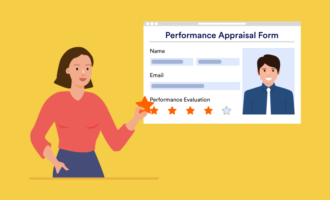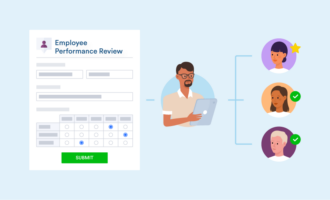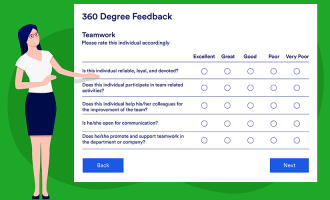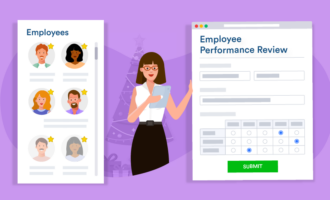Annual performance reviews are so last year. Today, companies are shunning infrequent employee meetings in favor of a continuous feedback model —a system that significantly increases how often employees and managers exchange feedback.
In this article, we’ll take a close look at what continuous feedback is, why it’s so effective, and how you can start implementing a continuous feedback model process today.
What is continuous feedback?
Continuous feedback facilitates frequent conversations between employees and managers. It’s a two-way conversation in which managers collect feedback from employees and then offer their own feedback — like praising employees for what they’ve done well and providing constructive criticism when necessary on how they can improve.
The idea is to create a continuous learning loop that allows both managers and employees to learn and progress much faster than they would if they met once every quarter or once every year.
What are the benefits of continuous feedback?
There are several key benefits of adopting a continuous feedback model.
Address issues quickly
When issues occur, there’s no need to wait until an employee’s annual review to address them, says Reda Chouffani, vice president of development at Biz Technology Solutions. You can solve the problem as it happens in real time. Continuous feedback “also reduces employee frustrations by allowing them to interact more frequently with their managers and gives them a platform to share their needs and concerns,” Chouffani writes.
Deliver more effective feedback
If you want your feedback to go further, providing it more frequently is the way to go. Ongoing feedback can be more effective than annual reviews, says Srikant Chellappa, president at people strategy platform Engagedly. “It allows employees to receive feedback on a regular basis so that they can continue to improve their performance,” he writes. “Additionally, it allows managers to give feedback that is more tailored.”
Create a better employee experience
Continuous feedback can create a better working environment and provide the kind of experience employees demand. That’s because it “allows real-time communication between employees, managers and HR so that the data and processes that are critical to the company and employee growth can be managed in one place,” writes Jessica Kriegel, chief scientist of workplace culture at Culture Partners.
How do you build a continuous feedback process?
Want to get started with continuous feedback? Follow the step-by-step process below.
1. Explain the benefits of continuous feedback
Continuous feedback is quite a change of pace from annual performance reviews, so make sure employees and managers understand the benefits.
2. Schedule regular feedback sessions
Prioritize regular meetings with team members. Add these meetings to your schedule and try to have them at the same time each week.
3. Gather regular feedback from employees outside of scheduled sessions
Gathering feedback shouldn’t just happen in regularly scheduled meetings. Create a method (whether that’s an online survey or employee feedback form) that allows team members to submit comments and questions whenever they like.
4. Analyze employee feedback
Schedule time with your HR team and other department heads to analyze the feedback your employees provide. Continuous feedback is as much about improving how your company treats employees as it is about helping employees progress at work.
5. Don’t neglect more in-depth sessions
Just because you have regular employee feedback meetings doesn’t mean you should forgo in-depth sessions like annual reviews. These should still be a part of your feedback process, as they’ll give managers and employees time to discuss things like progress and pay.
How can you use software to implement continuous feedback?
Technology should play a core role in your continuous feedback process. You need a way to quickly collect, store, and analyze feedback to make it accessible and actionable for every employee meeting.
That’s where Jotform comes in.
Jotform makes it easy for you to collect and store employee feedback. Use one of our employee feedback form templates or employee feedback survey templates to get started quickly. You can store the data you get from it with Jotform Tables and share it with other managers and team leaders when it comes time to hold performance appraisals.
If your HR team is dipping its toes into continuous feedback, why not try Jotform today?
Photo by Christina @ wocintechchat.com on Unsplash
















































































Send Comment: